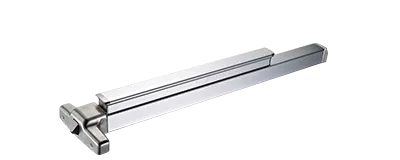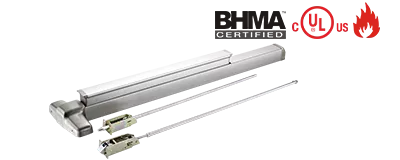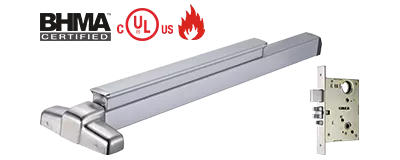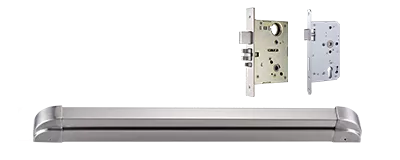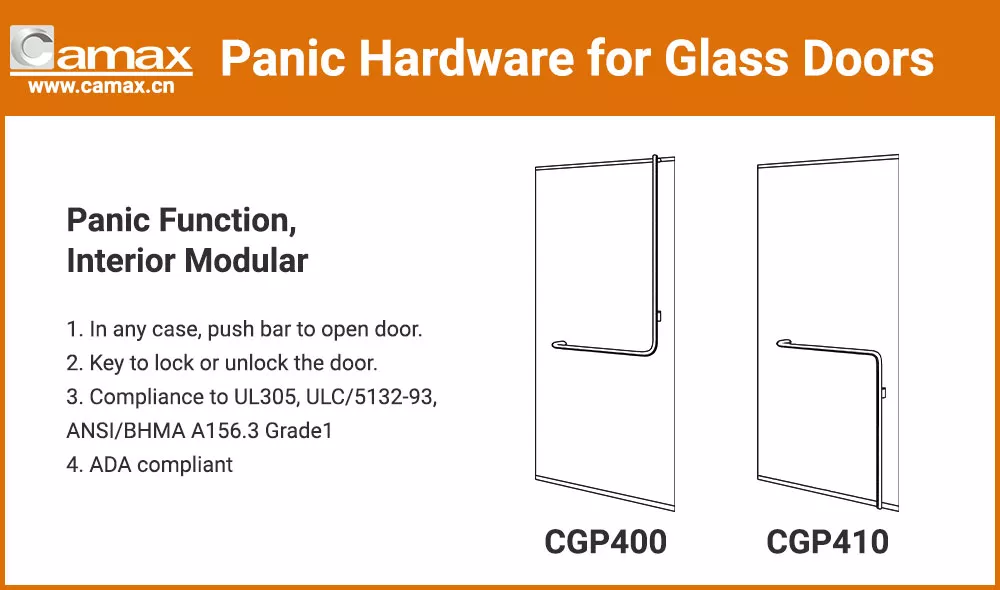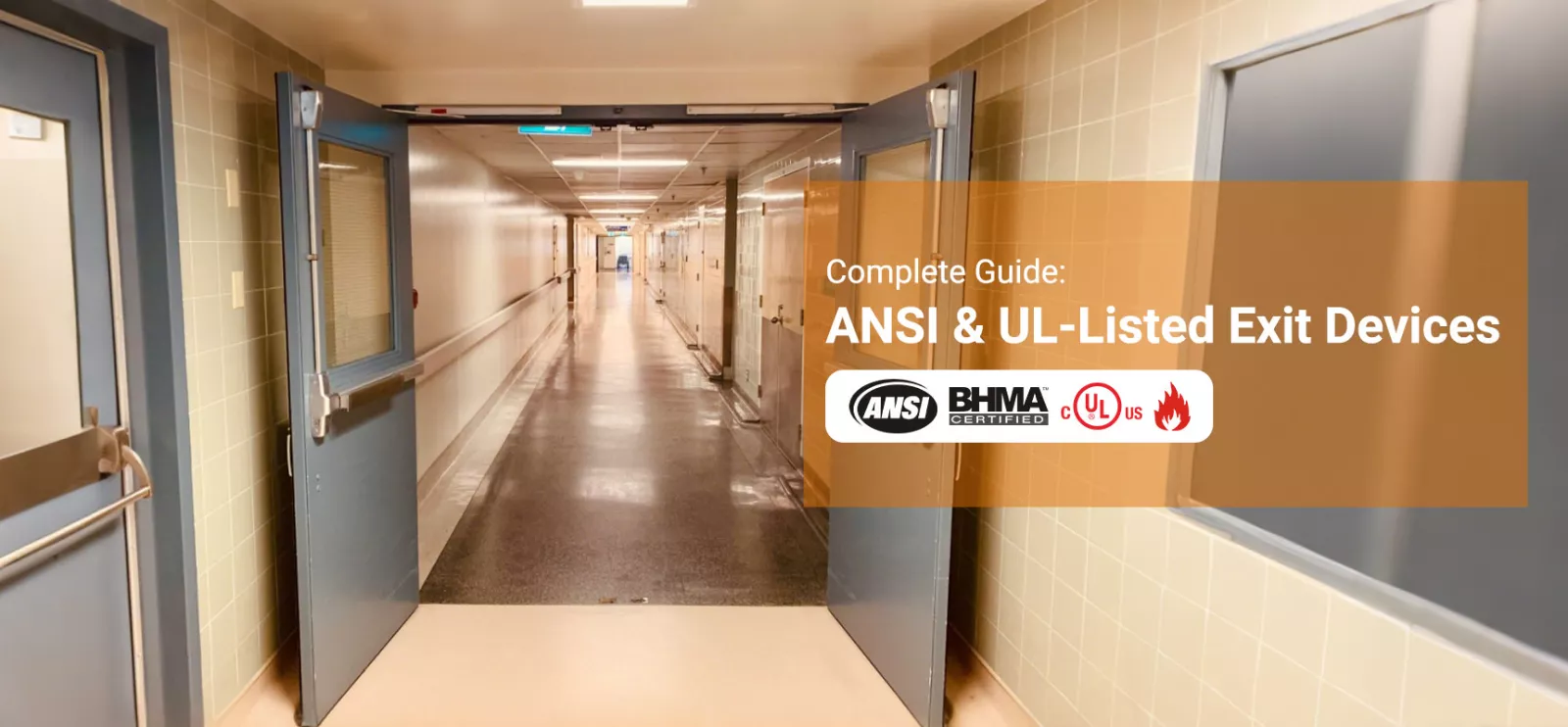
In emergencies, every second counts. When panic strikes and people need to evacuate quickly, the difference between life and death often depends on the reliability of exit devices – those horizontal bars across doors that allow immediate egress without keys, tools, or special knowledge. Also known as panic bars or crash bars, these critical safety components must function flawlessly under extreme conditions.
However, simply installing an exit device is not enough. To provide the required reliability and safety, the exit devices must meet rigorous performance standards. This is where ANSI (American National Standards Institute) and UL (Underwriters Laboratories) certifications come into play. These standards help ensure that your exit devices perform as intended during emergencies, preventing failure at critical moments.
In this article, we will explore the significance of ANSI and UL-Listed exit devices, how they meet safety standards, and why they are essential for compliance with building codes.
Table of contents
Understanding ANSI and UL: The Performance & Fire Protection Standard
1. What Are ANSI Standards for Exit Devices?
The American National Standards Institute (ANSI) serves as the coordinator for voluntary consensus standards development in the United States. For exit devices, the critical standard is ANSI/BHMA A156.3, which establishes comprehensive performance requirements for ANSI exit device hardware.
This standard doesn't just cover basic functionality – it establishes rigorous testing protocols that simulate years of use, extreme weather conditions, and emergency scenarios. Every ANSI emergency exit device must pass extensive cycle testing, force requirements, and durability assessments before earning certification.
ANSI categorizes exit devices into three performance grades, each designed for specific applications and usage levels:
Grade 1: The highest performance level, designed for heavy-duty commercial applications. ANSI Grade 1 exit device hardware is ideal for high-traffic buildings like hospitals, schools, and office complexes.
Grade 2: Medium-duty applications suitable for moderate traffic commercial buildings.
Grade 3: Light-duty residential and low-traffic commercial applications.
ANSI Grade 1
Designed for over 1 million cycles, offering maximum durability and security.
ANSI Grade 2
Tested for 500,000 cycles, ideal for offices and schools with moderate traffic.
ANSI Grade 3
Acceptable for residential-grade and light commercial use.
2. UL-Listed Exit Device Requirements: Fire Safety and Emergency Performance
Underwriters Laboratories (UL) is a global safety science company that focuses on product safety testing and certification. For exit devices, UL standards ensure that UL-Listed panic hardware performs safely during fire emergencies and other critical situations.
The key UL standard for exit devices is UL 10C (Positive Pressure Fire Tests of Door Assemblies), which is crucial for fire-rated applications. When exit devices pass these rigorous fire tests, they become classified as Fire Exit Hardware rather than standard panic hardware.
The Importance of Dual ANSI and UL Certification for Commercial Buildings
ANSI certification ensures that an exit device works reliably and lasts throughout its intended service life, while UL listing guarantees it performs safely during emergencies, especially fires. For commercial and public buildings, both certifications are typically mandated by building codes, making ANSI and UL-Listed Exit Device hardware not just preferred, but legally required.
Camax Hardware Manufactures Complete Range of ANSI and UL Certified Exit Devices
At Camax Hardware, we understand that different applications require different solutions. Our comprehensive range of certified exit devices ensures that every building type and door configuration can be equipped with reliable, compliant emergency egress hardware.
1. Rim Exit Devices
Rim exit devices are surface-mounted devices typically used on single doors. Camax’s rim devices meet ANSI Grade 1 specifications and come with UL listings for panic and fire exit applications.
- • CE & UL Listed Panic Touch Bar
- • Non-handed
- • Certificate: ANSI/BHMA A156.3 grade 1; UL10C, fire rated
- • Material: Stainless steel, Steel
- • Finish: Stainless steel satin, Silver painted, Polishing, PVD, Black, Red
- • Narrow Stile Door Exit Device
- • Non-handed
- • Compliance: ANSI/BHMA A156.3 grade 1; UL10C, 3-hour fire rating
- • Material: Stainless steel, Steel, Aluminum
- • Modular design, more than 4-point locks are available. Security anti-thrust latch.
2. Vertical Rod Exit Devices
Perfect for double doors and applications requiring top and bottom latching points. These devices provide superior security while maintaining emergency egress capabilities in accordance with ANSI standards.
- • Concealed Vertical Rod Exit Device
- • Non-handed
- • Certificate: ANSI/BHMA A156.3 grade 1; UL10C, fire rated
- • Material: Stainless steel, Steel, Aluminum
- • Finish: Stainless steel satin, Silver painted, Polishing, PVD, Black, Red
- • Narrow Stile Concealed Vertical Rod Exit Device
- • Non-handed
- • Compliance: ANSI/BHMA A156.3 grade 1; UL10C, 3-hour fire rating
- • Material: Stainless steel, Steel, Aluminum
- • Security anti-thrust latch
3. Mortise Exit Devices
Designed for integration with mortise lock bodies, the mortise exit devices provide enhanced security and a sleek aesthetic. These devices are fully compliant with relevant ANSI and UL standards.
- • Heavy-Duty Panic Device
- • Non-handed
- • Certificate: ANSI/BHMA A156.3 grade 1; UL10C, 3-hour fire rated
- • Work with ANSI mortise locks.
- • Modular design, more than 4-point locks are available.
- • Security anti-thrust latch.
- • Touch Bar for Mortise Lock or Concealed Vertical Rod
- • Non-handed
- • Compliance: ANSI/BHMA A156.3 grade 1; UL10C fire rated; EN1125, EN1634-1 fire-rated
- • Work with Euro mortise locks complied to EN1125.
- • Material: Stainless steel, Steel.
4. Glass Door Panic Hardware
Specially designed for glass doors in commercial environments, Camax’s glass door panic hardware maintains the aesthetic appeal of glass installations while providing full ANSI and UL compliance.
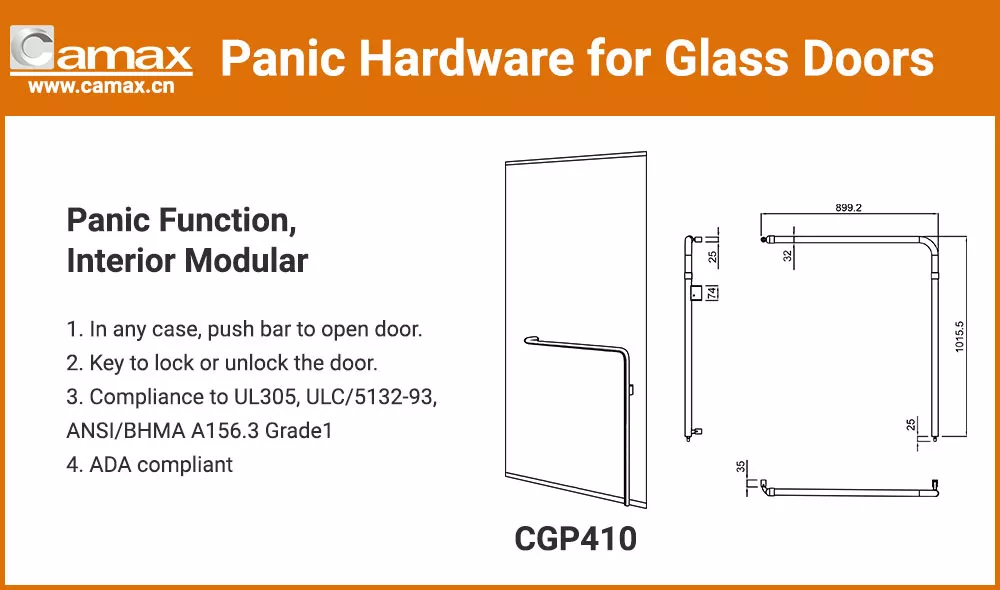
How to Choose the Right ANSI and UL-Listed Exit Device for Your Project
Choosing the appropriate exit device requires careful consideration of multiple factors that affect both performance and compliance. The wrong selection can lead to premature failure, code violations, or worse – compromised life safety during emergencies.
When choosing an exit device, consider factors such as:
Building Type: Schools, hospitals, and high-occupancy buildings require Grade 1 devices for maximum durability and reliability.
Door Configuration: Single doors, double doors, and glass doors each have specific hardware requirements.
Fire Rating Requirements: Fire-rated door assemblies must use UL-Listed fire exit hardware without mechanical dogging.
Usage Frequency: High-traffic applications demand Grade 1 performance to ensure long-term reliability.
Frequently Asked Questions about ANSI and UL-Listed Exit Devices
1. Can I use standard panic hardware on fire-rated doors?
No, fire-rated door assemblies require UL-Listed fire exit hardware, not standard panic hardware. Fire exit hardware is specifically tested to UL 10C standards and cannot have mechanical dogging features, ensuring the latch always engages to prevent fire and smoke spread through the door assembly.
2. How do I know if my exit device meets current building codes
Check for both ANSI and UL labels on the device. The ANSI label should indicate compliance with A156.3 standards and show the appropriate grade. UL labels confirm fire safety compliance. Additionally, consult with local building officials or hardware professionals to ensure your specific application meets current codes.
3. How often should exit devices be tested and maintained?
Exit devices should be tested monthly for proper operation, with annual professional inspections recommended. Fire exit hardware on fire-rated doors requires more frequent testing as specified by NFPA 80 standards. Regular maintenance includes checking for proper latching, smooth operation, and ensuring all components are properly adjusted and secure.
Contact Camax Hardware to Invest in ANSI and UL-Listed Exit Devices
Installing ANSI and UL-Listed exit devices is not just about following building codes—it's about investing in the safety of your building’s occupants. By choosing certified devices, you’re ensuring reliable performance, durability, and compliance with life safety regulations.
At Camax Hardware, we are committed to providing high-quality exit devices that meet both ANSI and UL standards. Investing in these devices will give you peace of mind knowing that your building is equipped with the best safety solutions available.
For more guidance on selecting the right ANSI exit device for your building, contact Camax Hardware today!
Need help? Contact Camax for a quote!
Discover Camax's door & window hardware with ANSI/BHMA/UL/CE certification today!



